Public attitudes to coronavirus: May summary
This report includes some high level findings from recent polling work on public attitudes to the coronavirus pandemic in Scotland. A report covering earlier survey work was published on 8 May 2020.
This document is part of a collection
1. Impact of Coronavirus
Threat perception
Respondents were asked what level of threat they thought Coronavirus posed to a range of dimensions of life. As shown in Figure 1, the greatest threat was perceived to be to 'the world', followed by 'threat to country' and 'threat to your community'. Personal threat was perceived to be the lowest and has fallen since the end of April.
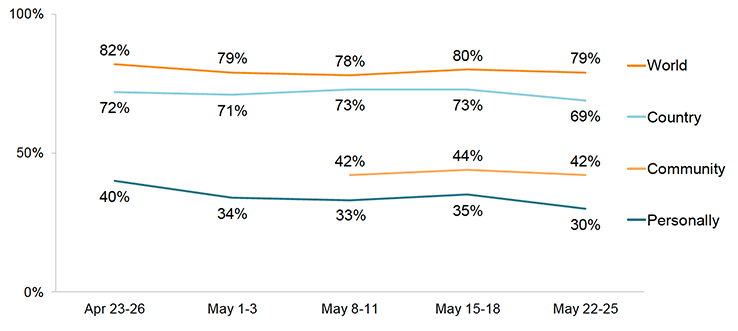
Source: Ipsos MORI, Scotland data. Base (n=500-684)
Financial impact
Respondents were asked to what extent they agreed or disagreed with a statement about the financial impact of Coronavirus, and the perceived level of threat to their job or business. As shown in Figure 2, just under two thirds agreed that there will be financial impact on them and their family. This has fallen since the middle of April, when, as previously reported, 75% agreed there would be a financial impact[1]. Just under half of those in employment perceived a threat to their job or business, and this has remained relatively stable through the month.
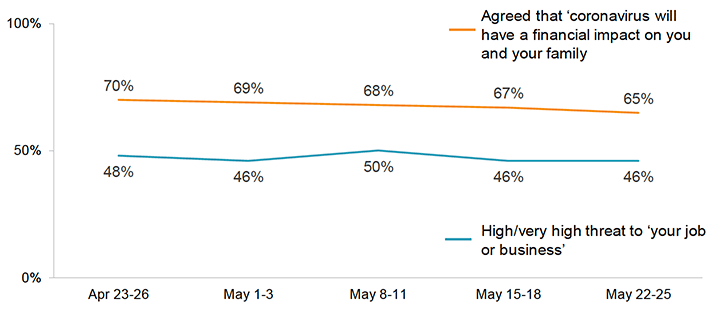
Source: Ipsos MORI, Scotland data. Base: all respondents (n=500-684), those in employment (n= 301-444).
Respondents were also asked how concerned they were about the impact of Coronavirus on their household finances. As shown in Figure 3, around a quarter of respondents were 'extremely' or 'very' concerned about being able to pay their bills or provide for their household, while just over a fifth were concerned about having a job. These measures have remained relatively stable throughout May.
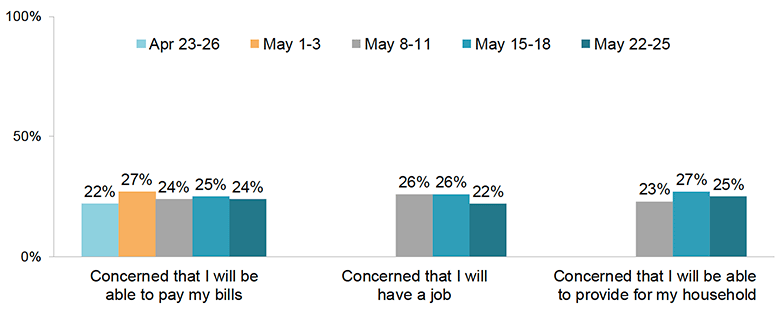
Source: Ipsos MORI, Scotland data. Base (n=500-684)
Health impacts
To understand the perceived health risk of Coronavirus, respondents were asked how serious they thought catching the virus would be for their health. As shown in Figure 4, the proportion who considered it an extremely or very serious risk fell between the end of April and the end of May. Respondents were also asked whether they thought someone close to them would become infected, and around half thought this was very or somewhat likely, a slight decrease since the end of April.
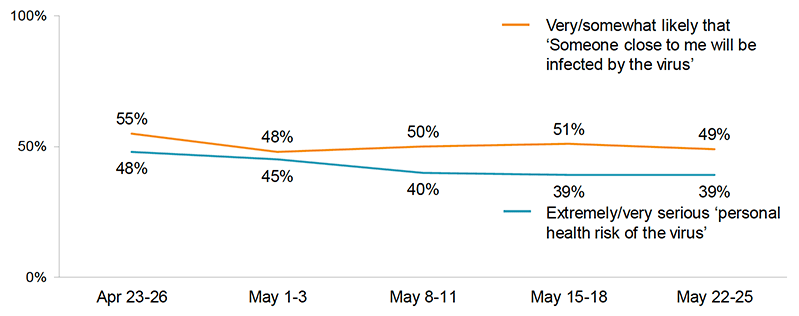
Source: Ipsos MORI, Scotland data. Base (n=500-684)
To understand the potential impact on non-COVID related health issues, respondents were asked if they would avoid going to a hospital or GP practice if they had a medical concern unrelated to Coronavirus. As shown in Figure 5, in the most recent survey wave a third agreed that they would avoid a hospital or GP practice. This has remained relatively stable since the end of April.
Although not shown on the chart, as it is outside the reporting period, this question was first asked April 21-22 when 45% agreed and 41% disagreed.
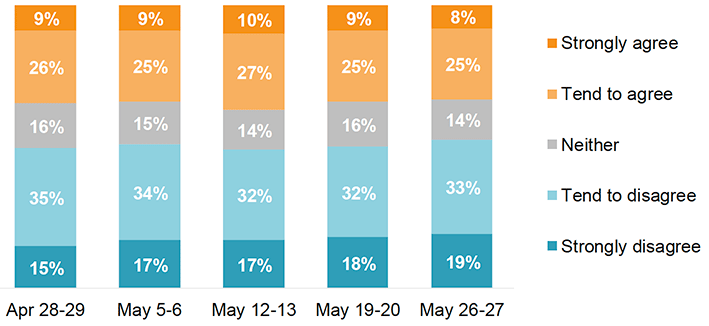
Source: YouGov weekly Scotland survey. Base (n=1004-1037)
Contact
Email: covid-19.behaviours@gov.scot
There is a problem
Thanks for your feedback